Australian Tropical Rainforest Plants - Online edition
Calamus moti F.M.Bailey

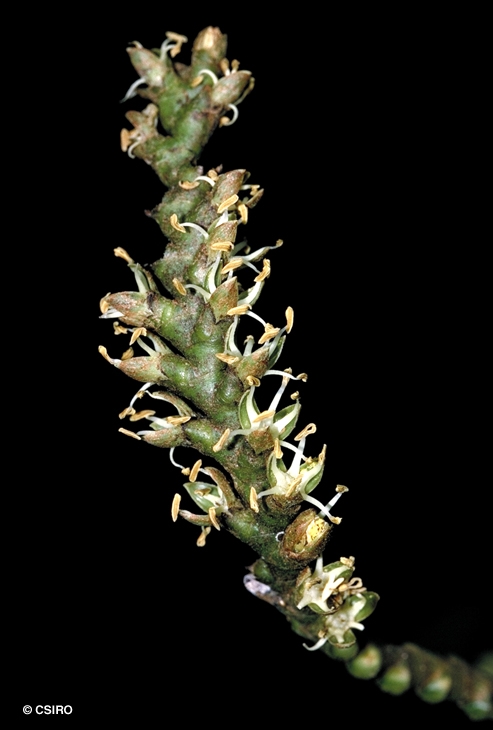
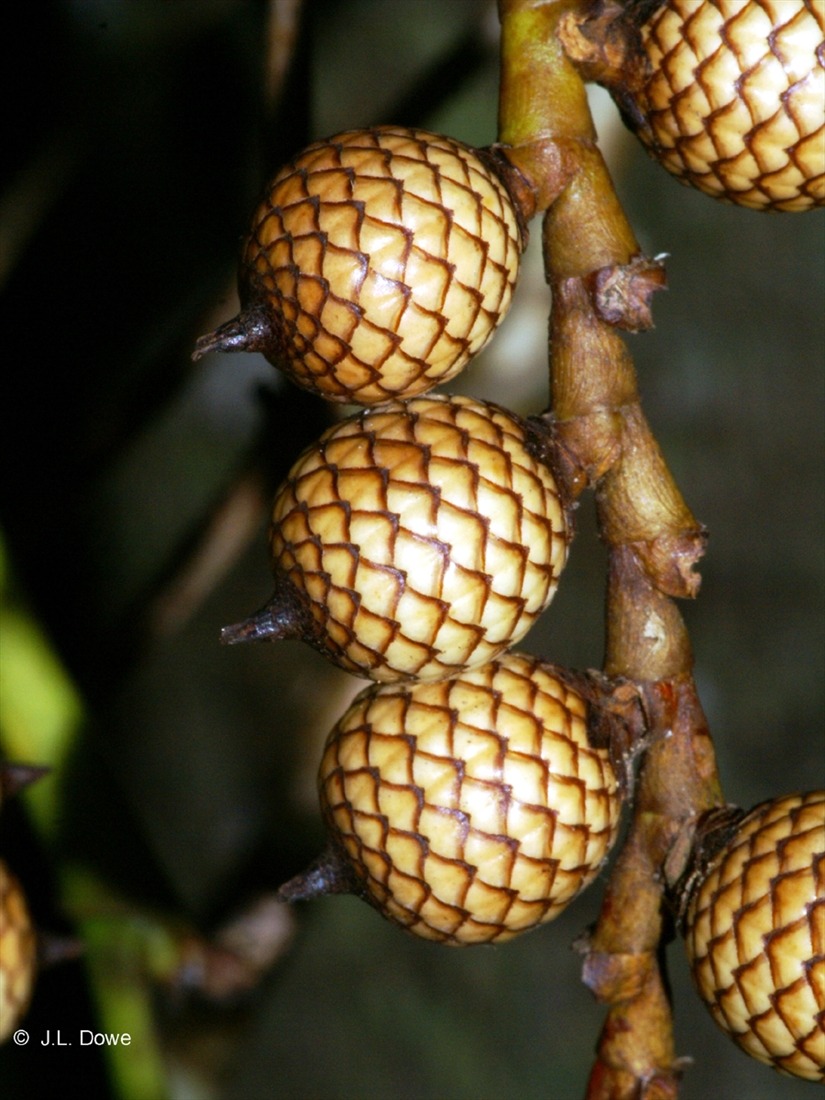
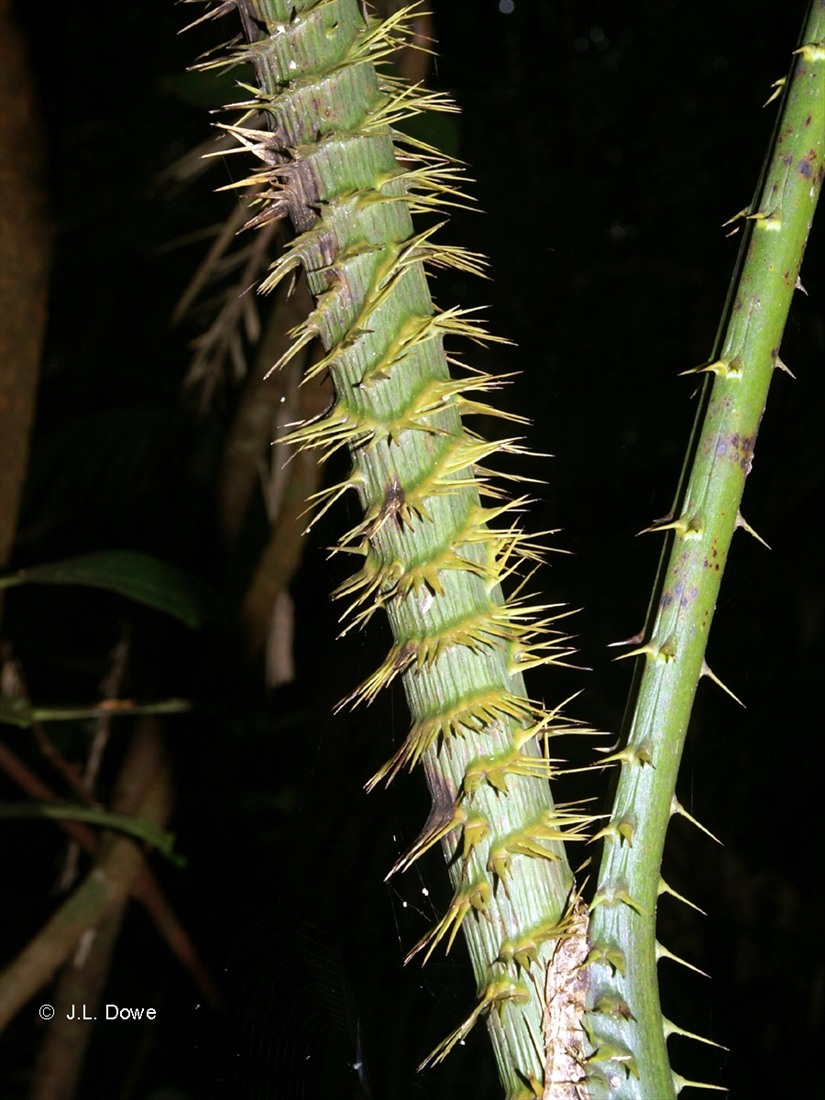

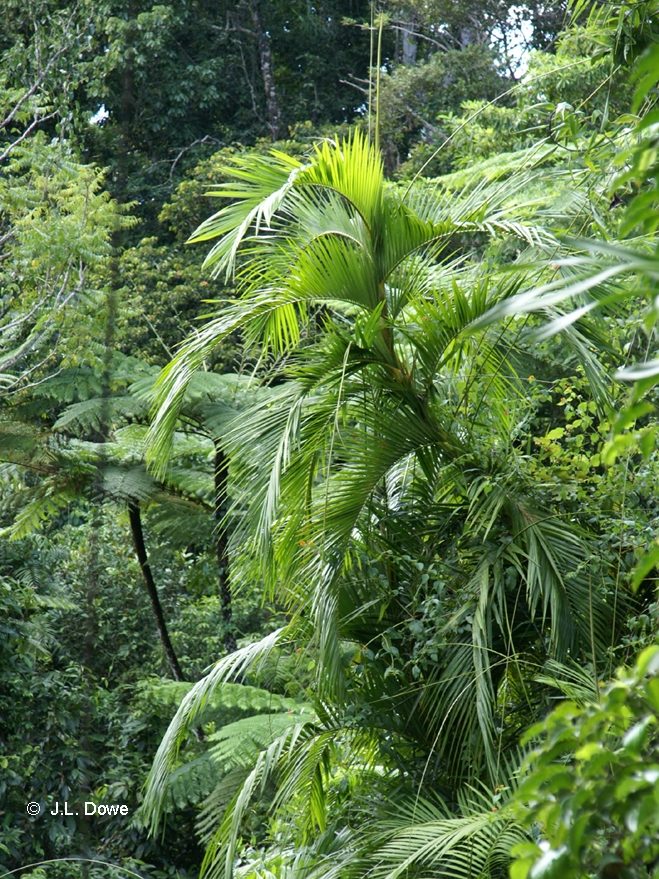
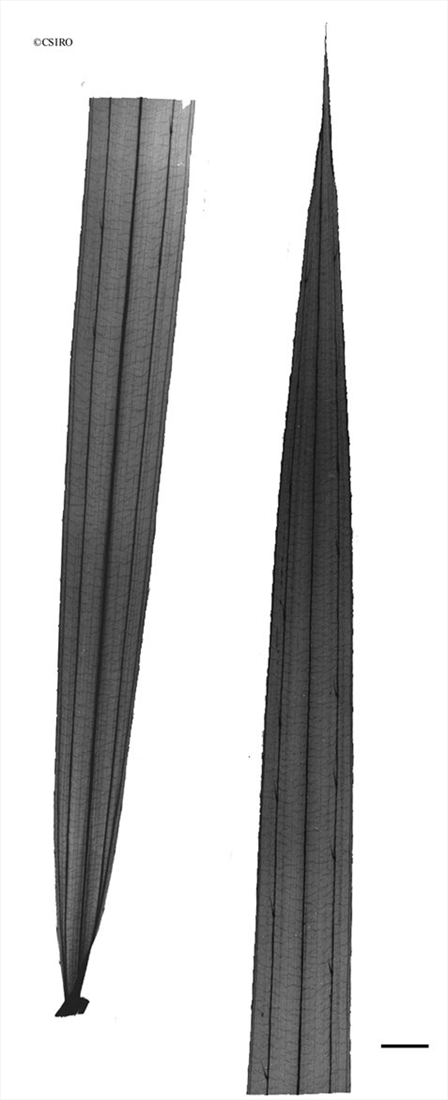
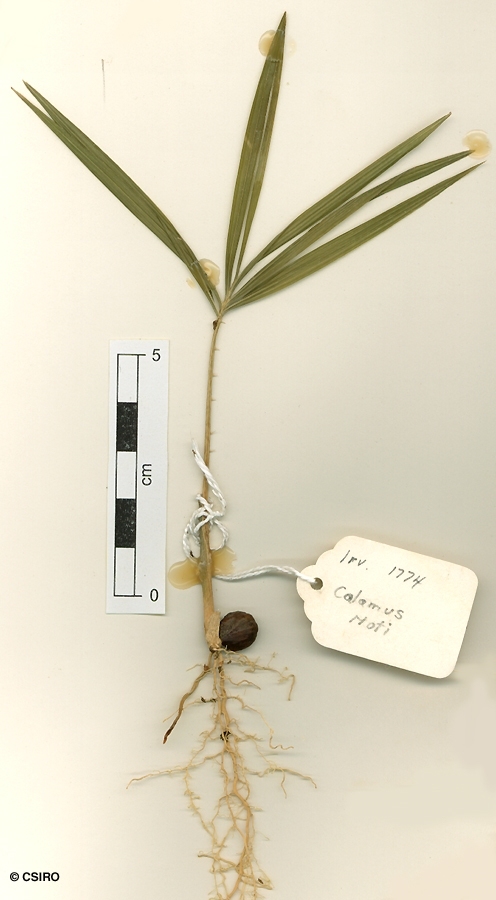
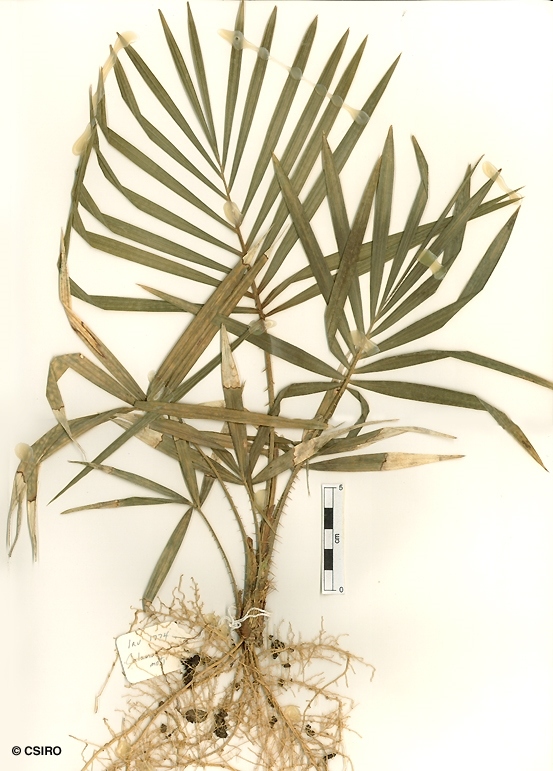

Bailey, F.M. (1896) Queensland Department of Agriculture and Stock. Botany Bulletin 13: 13. Type: Queensland, Barron River, E. Cowley; holo: BRI(?).
Cane, Large Lawyer; Cane, Yellow Lawyer; Cane, Yellow Thorny Mary Lawyer; Large Lawyer Cane; Wait-a-while; Yellow Lawyer Cane; Yellow Thorny Mary Lawyer Cane
Vine stem diameters to 3 cm recorded. Vine stem surface smooth and glassy.
Compound leaves about 1 m long. Leaflets 40-100 in each compound leaf, the compound leaf up to 1.6 m long. Leaflet blades linear, about 15-60 x 0.8-2 cm, sessile. Leaflet blade margins armed with fine serrate teeth and the underside is armed with four rows of fine spines to 5 mm long. Compound leaf axis flattened, the underside armed with 3 rows of recurved spines. Tendrils (metres long and armed with recurved hooks) emerge from the sheathing petioles which are armed with rows of flat or blade-like spines. Venation longitudinal and parallel with 2 or 3 veins on each side of the midrib more prominent than the rest.
Male flowers: Inflorescence a narrow panicle about 2-3 m long, borne on the sheathing base opposite the compound leaf petiole. Outer tepals fused to form a cup about 4-5 mm long, lobes about 1 mm long. Inner tepals about 5 mm long, clothed in rusty scales. Stamens 6. Anthers about 3 mm long. Staminal filaments about 3-5 mm long. Rudimentary ovary present. Female flowers: Inflorescence a panicle of curved spikes about 3 m long. Flowers paired, the smaller of each pair being a sterile male flower. Outer tepals about 5 mm long, the outer surface clothed in rusty scurfy scales. Inner tepals about 4 mm long, the outer surface clothed in rusty scurfy scales. Staminodes 6, fused to form a disk surrounding the ovary. Stigmas 3 or 3-armed.
Usually two cataphylls produced before the first true leaves. First true leaf with about six leaflets, spines present on the petiole. At the tenth leaf stage: leaf compound, pinnate, with about 18-20 leaflets, terminal leaflet deeply bilobed. Lateral leaflets sessile, about 12 x 0.7 cm. Petiole ligulate. Petiole armed with numerous spines and the sheathing base of the petiole is also armed with hairs or spines. Leaflet blades V-shaped in transverse section close to their attachment to the compound leaf axis.
The large diameter canes of this species have been used in the manufacture of cane furniture.
Distinguishing features: leaf not terminating in a cirrus (whip-like extension armed with spines); apex of pinnae tapered, acuminate; leaf sheath armed with spines arranged in rows.





